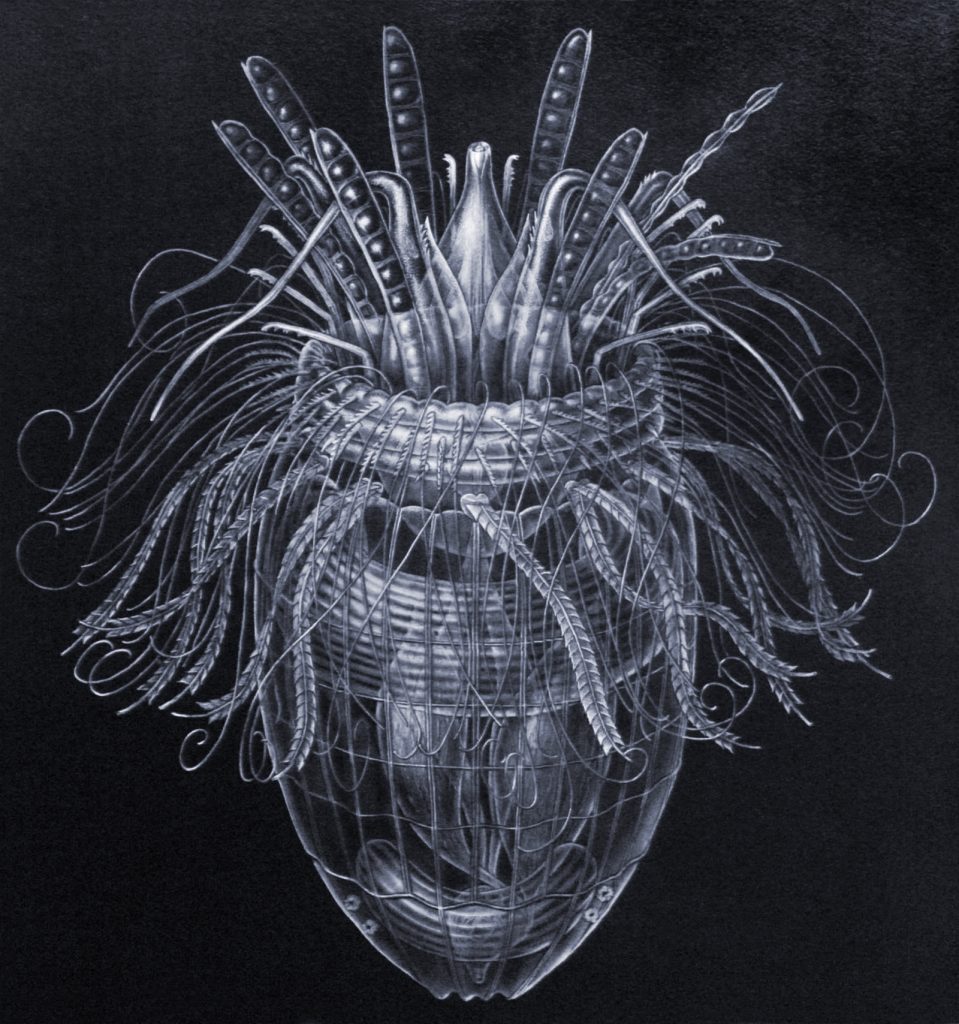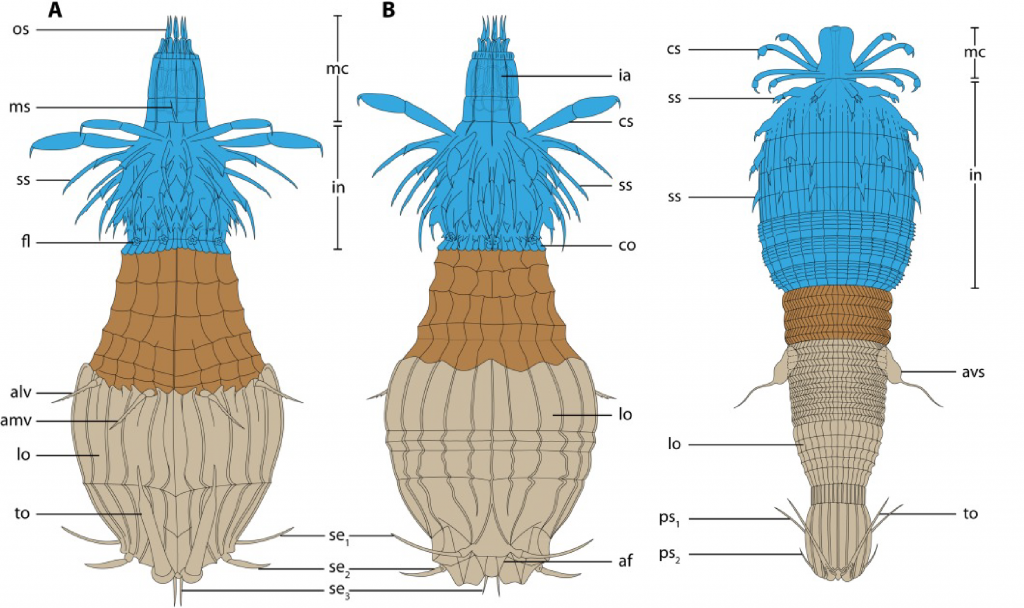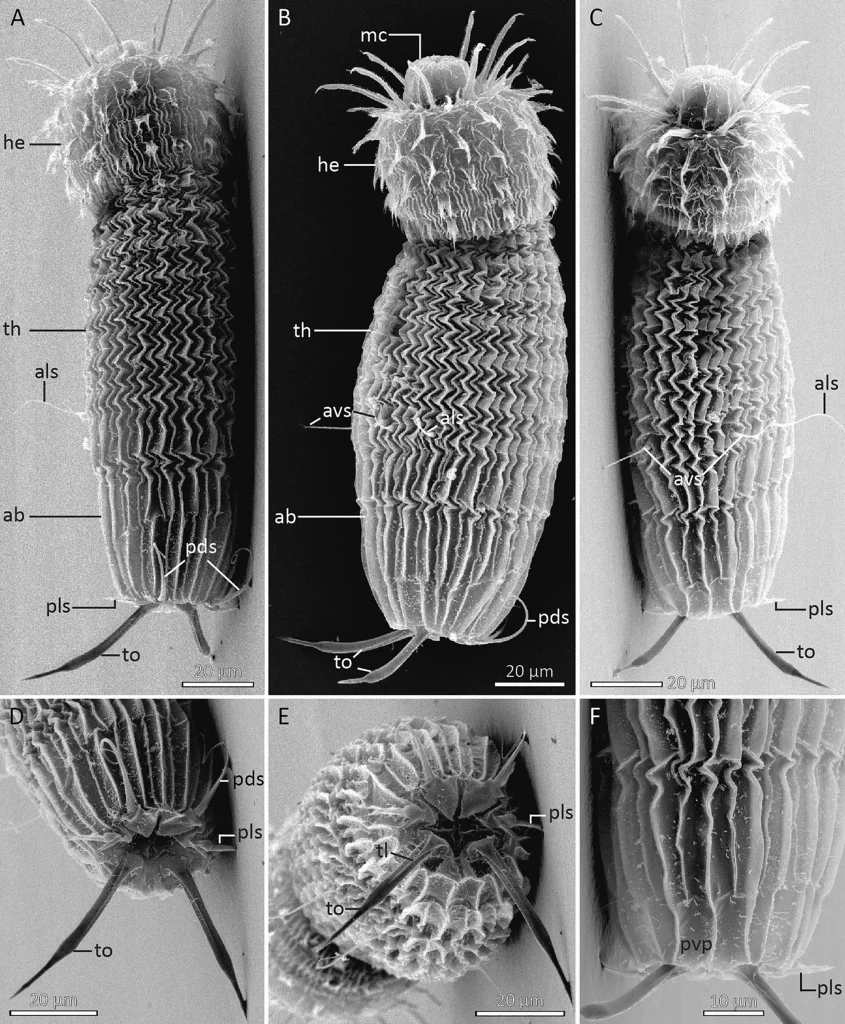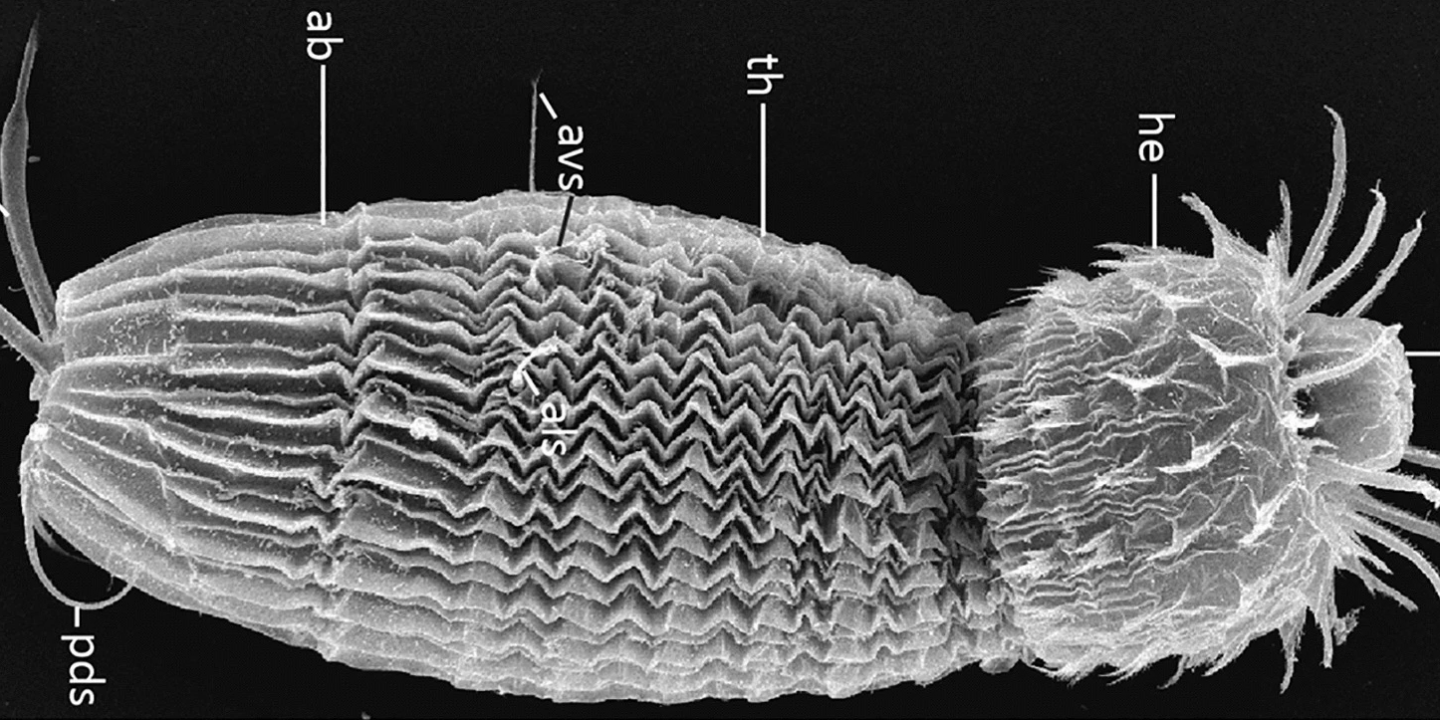For my second advent calendar entry this year, I would like to highlight one of the most exciting papers I’ve read recently. It came out just last month in Organisms Diversity & Evolution, and is titled “A new Loriciferan, Scaberiloricus samba gen. et sp. nov., links the Higgins larva and the aberrant Shira larva”, by Sørensen and colleagues. A paper describing a new species or genus is always interesting, but it’s the second part of the title that makes the paper really thrilling.
But to really share the joy, first I probably need to explain to you what on earth Loricifera actually is, and what a Higgins and Shira larva are.
Loricifera are a clade of tiny marine invertebrate animals closely related to Kinorhyncha. They are rare – the phylum was first collected in the 1970s and first described in 1983, making them one of the most recently discovered phyla. Despite this, in the following 40 years, we have managed to find Loricifera all over the planet. They can grow as large as 1mm, but can bind themselves quite tightly to the marine sediment they call home, making them easy to mistake for a grain of sand or a slight error in adjusting the focus of your microscope. Because of this, having a knack for reliably identifying Loricifera is a prized skill in its own right!

Loricifera are a member of Ecdysozoa, which means that, just like insects and crustaceans, they molt. Similar to some of those insects, like dragonflies, beetles and flies, they can also have juvenile larval stages that are totally unlike the adult form (though it is worth noting that these juvenile larval stages aren’t related to the ones insects and crustaceans have – sometimes evolution ends up repeating on a theme). Some species of Loricifera have lots of larval stages, some have very few. Some even like these larval stages so much that they just lose their adult stages! However, one thing we do know about these loriciferan larval stages is that all loriciferans share a larval appearance known as a Higgins Larva, which is a larval stage where they look a lot like an adult, but also have an additional pair of toes.
As you may have already gathered from reading this blog about Loricifera… All Loricifera have a Higgins larval stage except when they don’t.
Well…. kind of. The Shira larva is a special subcategory of Higgins larva that was first described in 2014, and it’s pretty significantly different from the standard Higgins larva in a lot of ways, but the most obvious one really stands out. The Shira Larva is wide at the top and thin at the bottom, a bit like an old He-Man action figure, whereas the Higgins larva is the other way around, looking more like one of those roly-poly dolls you might have had as a little kid that can be pushed without falling over. One of the huge mysteries of the Shira larva is that, as this wildly aberrant looking larva, it has been hard to work out where the species that possesses it fits within our understanding of the internal relationships of Loricifera. As a phylogeneticist and a systematist, I just love putting animals on trees and in groups, and so this has been quite a vexing puzzle for an incredibly long time!

So what got me so excited about this paper that I was reading it, enraptured, on the day of annual leave I took for my birthday? Scaberiloricus samba seems to possess a larva that’s halfway between a Shira larva and a Higgins larva! It’s a bit thinner at the top, like a Higgins larva, but it’s also still quite thin on the bottom, like a Shira. More than that, if you look at the picture right above and compare it to the Scaberiloricus samba larva below, you’ll see that it’s got those zig zaggy folds across its body, much more like a Shira larva. There are a few other, more specific characters too, that sometimes resemble a typical Higgins larva, and sometimes the more esoteric Shira subtype. This means it might well represent an intermediate form between the two of them – a morphological link that could help us understand the evolution of the entirety of this group.

In FEZ, we do a lot of work with genomics and museomics and all other kinds of -omics, so it can be easy to forget sometimes that the bedrock upon which a lot of our work relies is strong morphological work. As loriciferan research really started in the 1980s, there is still a staggering amount we don’t yet know about them, and this even includes what might seem to be basic facts about their life and development. Papers like this get my mind whirring with the possibilities – it presents such a clear statement of all the things we don’t yet understand about our complex and changing living world, and clarifies a question that has been a thorn in the side of loriciferan researchers for almost ten years – which is about 25% of the entire time we’ve even known that they exist! (And get ready for a Loricifera Group Of The Month post in 2023)
(The featured Image for this blog post is an edit of Figure 6 of Sørensen et al 2023, where I have cut out panel B and rotated it to lie horizontal)
![]()

2 Comments on “Day 14: When is a Larva like a Birthday Present?”